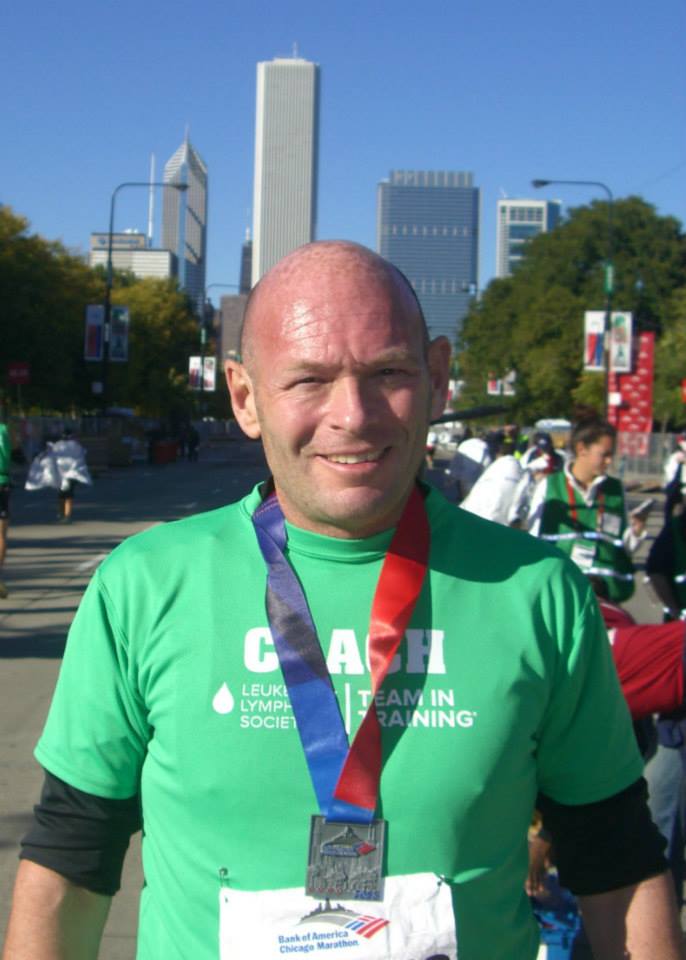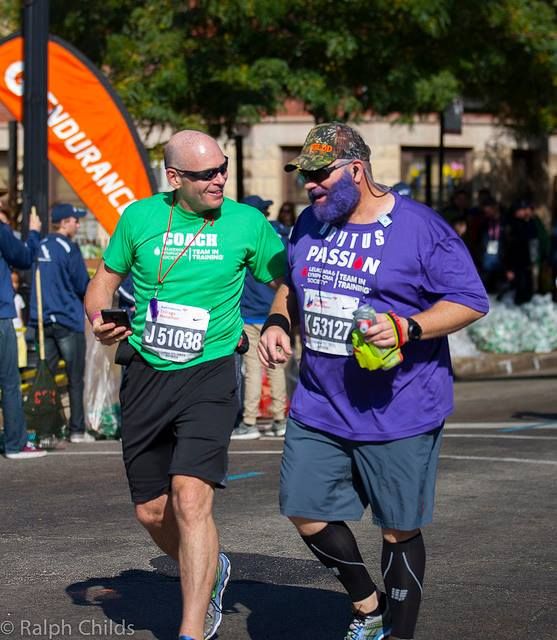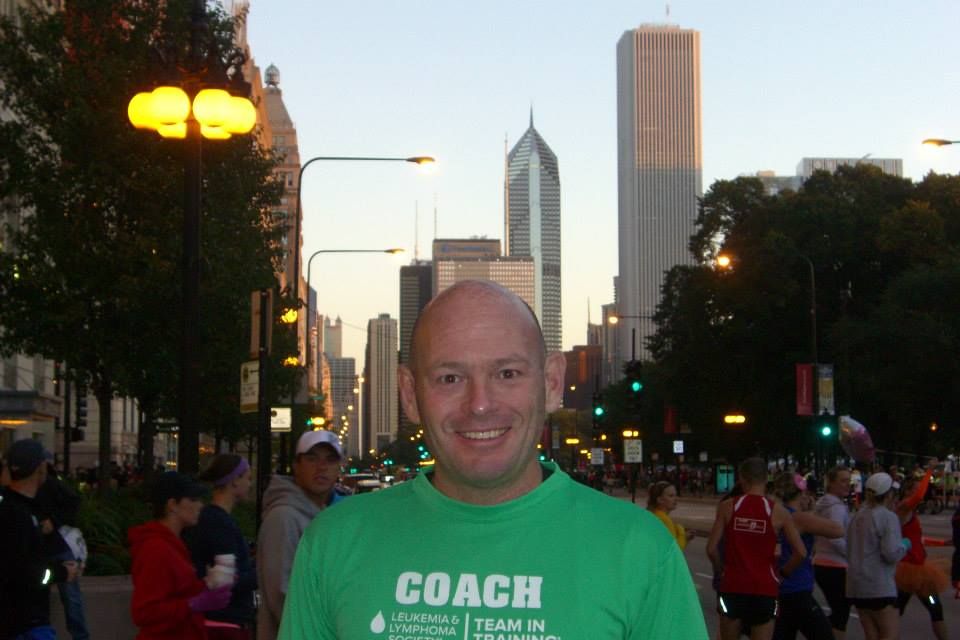- Case-Based Roundtable
- General Dermatology
- Eczema
- Chronic Hand Eczema
- Alopecia
- Aesthetics
- Vitiligo
- COVID-19
- Actinic Keratosis
- Precision Medicine and Biologics
- Rare Disease
- Wound Care
- Rosacea
- Psoriasis
- Psoriatic Arthritis
- Atopic Dermatitis
- Melasma
- NP and PA
- Skin Cancer
- Hidradenitis Suppurativa
- Drug Watch
- Pigmentary Disorders
- Acne
- Pediatric Dermatology
- Practice Management
- Prurigo Nodularis
- Buy-and-Bill
Article
Skin cancer screenings target marathoners
Expert offers colleagues insight about the runner’s mentality on sunscreen and best practices for educating your local community
They’re outside, exposed to the sun for what can be hours at a time. But runners - marathoners, in particular - often don’t use adequate or any sun protection. One dermatologist finds that this makes marathoners an opportune target for skin cancer screenings.
A case in point

Chicago running coach Ross Forman was doing a training run when he came upon a white tent with a sign for free skin cancer screenings. Forman, who said he had noticed a spot on his chest, wandered in. But he didn’t want to stay to fill out the necessary paperwork.
READ: Survival with melanoma subtypes varies
“I said I’ll come back when I’m done running,” Forman said.
As he was leaving, the Leukemia and Lymphoma Society Team in Training coach, who was training runners for the 2015 Chicago Marathon, ran into Dermatology Chair at Loyola University, Rebecca Tung, M.D.
“As I’m walking out, this lady is walking back into the tent. She asked me if I was there to get screened, and I said, no, I’m going to come back,” Forman said. “She said, I can have you in and out in 90 seconds.”
Forman agreed to a full body exam. When Dr. Tung got to his chest, she found the spot, a basal cell carcinoma. Forman made the appointment, then and there, to see Dr. Tung the following Monday (this was a Saturday). She removed it via a simple in-office procedure.
Turnout for this annual screening ended up being the highest ever for a free, one-day skin cancer screening event, according to the American Academy of Dermatology’s (AAD's) screening totals for 2015. Called SunSmart Chicago, the screening at North Avenue Beach in the Windy City was done in collaboration with Women’s Dermatologic Society (WDS), AAD and the Chicago Dermatological Society.
“We screened 670 people at the one-day event,” Dr. Tung said. “It was generously sponsored by a grant from La Roche-Posay. They were critically important because they helped provide the educational materials, as well as the sunscreen samples. We reached some 1,000 people who were given sunscreen samples and educational packets about sun safety and the signs of skin cancer.”
NEXT: Skin cancer prevention

Forman said he has since started using sunscreen, and he’s helping, along with Dr. Tung and dermatology colleagues, to spread the word about skin cancer prevention among runners in Chicagoland.
“I told two of my coaches about what happened to me, and immediately they said they have marks they want to get screened,” Forman said.
With 100 runners out for a run the following Saturday morning, Forman asked for a show of hands of how many of those runners were wearing sunscreen.
ALSO READ: Skin clues help identify cancer metastases
“It was July… and a handful of runners’ hands went up in the air. Then, I told them my story,” he said. “Now, whenever I go out on a run … sunscreen is as important as water or energy (nutrition).”
Forman invited Dr. Tung and fellow dermatologists to offer skin screenings and sun protection information to runners preparing for the marathon on Saturday, Labor Day weekend. At the event, co-hosted by WDS and the American Society for Dermatologic Surgery, more than 70 percent of all marathoners opted for a free screening. A similar proportion wanted to learn more about the appearance of skin cancer and how to be safer in the sun, according to Dr. Tung.
NEXT: Putting this into practice
Putting this into practice

Dermatologists who want to link with running organizations and planned runs or walks in their communities can start with Women’s Dermatologic Society (WDS) or the American Academy of Dermatology’s SPOT Skin Cancer program.
Both organizations, according to Dr. Tung, help dermatologists by providing sunscreen samples, educational materials and support.
RECOMMENDED: Viruses may lead to skin disease, cancer
Dermatologists can also reach out to national organizations, such as the Susan G. Komen Race for the Cure , the American Cancer Society, Miles for Melanoma. and Leukemia and Lymphoma Society Team in Training, to name a few. All have running and walking events around the U.S. Another option is to go through local running clubs. Most cities and towns have them. In each case, dermatologists would offer to hold a skin cancer screening at the event or for members.
“Ross and I and my dermatology colleagues are going beyond this, and we’re currently working with Chicago Area Runners Association and planning a larger screening and skin cancer awareness event in May [2016] for runners in the Chicagoland area,” Dr. Tung said.
NEXT: What you should know about runners
What you should know about runners

Dr. Tung said that she found one of runners’ bigger obstacles for wearing sunscreen is that they think it will run into and irritate their eyes.
ALSO READ: Melanoma subtypes challenging to diagnose, treat
“What we pointed out is there are certain sunscreens for people with sensitive skin that don’t have [irritating] ingredients, which could be very good for them to use. But it’s not only that. It’s reminding them about total sun protection: wearing [ultraviolet protection factor] UPF sun-protective running shirts, a hat (especially with closely cropped hair) and sunglasses to protect around the eye area,” she said. “For a lot of runners, I had to point out that as a skin cancer surgeon I see a lot of squamous cell carcinoma on the lips. They often forget their lips are exposed, as well, and they should wear a protective lip balm that has sunscreen.”
NEXT: Seizing the opportunity

Seizing the opportunity
Runners like to run. So, as was the case with Forman, it’s important to make the screenings convenient and fast, so runners can get on the road for their training sessions.
Still, the little time dermatologists have with runners to make them aware of sun protection and their skin, is an opportunity, according to Dr. Tung.
RECOMMENDED: Opportunities, challenges with new treatments for advanced cancer
“[The damaging effects of the sun and need for sun protection] are things runners have in the backs of their minds. So, I think having that personal reinforcement by a dermatologist was helpful,” Dr. Tung said.
Doing the community screenings makes dermatologists good citizens, especially when it comes to improving access to health care among people who might not have it or don’t realize they need specialized care, she said.
“Reassuring people is important,” Dr. Tung said. “I’ve pointed out to people that they have a benign growth, a cherry angioma, and they’re like, ‘Oh my God, thank you! I was so worried this was melanoma.’ That’s where your vision and your experience as a dermatologist can really help another person. And I think that’s what we’re all about.”
Newsletter
Like what you’re reading? Subscribe to Dermatology Times for weekly updates on therapies, innovations, and real-world practice tips.





